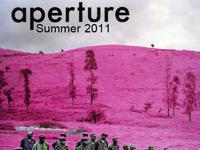
The photographs in these pages are excerpted from a larger project titled The Automan (L’Automa), which tells a story of an elderly man living in Venice’s Jewish ghetto of Canareggio during World War II. The man is lonely – few of his fellow Jews remain in the ghetto – and so he builds himself a robot, or automaton, which he names Nino. The tale goes on to explore the friendship between the old man and his invention, and what take place when the Nazis round up the few remaining Jews in Venice.
The Automaton was a tale my father invented and told when I was a child. It was never written down, so each time he told it, the story varied somewhat. I was always drawn in by the characters of the old man and the automaton, and above all by the imagery that appeared in my head as he recounted the story.
Interestingly, the word ghetto – used in many languages to designate the place where minority groups are isolated – is thought to have originated in Venice: the area of the city to which the Jews were relegated in the sixteenth century was on the site of an abandoned foundry; getto means “foundry” in old Venetian dialect.
In reality, more that two hundred Jews were indeed taken from Venice by the Nazis on the night of December 5, 1943; only a handful ever returned. That incident is the inspiration behind this story.
The process for these images is similar to the process I use for all my work: it consists of re-creating the story I want to tell using models and built environments. The use of models allows me the freedom to create anything I want – to make images exactly as I imagine them.
My work is divided into three phases. The first is total freedom; this is when I am able to imagine what it is I want to represent. During this time I often sit down and sketch what I see in my mind in order to give shape to a blank canvas.
The second phase is the creation of the set – a manual activity. I can take from one day to one month to build a set, depending on the complexity of the scene. Not just the technical complexity of building it, but getting the feeling of the scene just right.
The third phase is the actual creation of the photograph. I start by taking a polaroid and adjusting details of the set until it’s absolutely perfect. I often carry the polaroid around in my pocket for a day or more to think about it. Once I am completely happy with the image I shoot the film. This is both the most important and the least important “act” of the process.
The process for this work differed slightly in that I started with a story that I knew from my childhood. A story that was never written down. So first, I had to adapt and write the story, as I wanted to tell it; and then I needed to create the images to complete it.
I have always liked to tell stories with my work. My past series War Souvenirs and Winter Stories are narratives, though not necessarily linear ones. Each single image is a story in itself, and they are strung together through a theme – a character or period in history. With The Automaton project, I was interested in telling a narrative from beginning to end through the use of photographs and text together.
I use photography because what people see in photographs they believe is real – even if they know it is a model. When you go to see a film you know it’s a setup, but you cry, you get excited, you are deeply touched. People want to believe what they see on film.